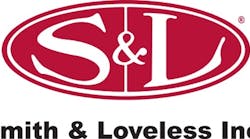Wastewater pump clogging issues caused by “flushables”—consumer products like wipes that are often marketed as safe for flushing—are well documented. But that does not mean they are going away anytime soon.
A September 2013 Associated Press article, “Popular Bathroom Wipes Blamed for Sewer Clogs,” introduced the issue to a national audience: Pre-moistened wipes and other consumer goods often marketed as flushable are creating pump clogs and sewage backups in collection systems across the nation.
Flushable wipes alone are a $6-billion-per-year and growing industry, led by strong marketing efforts to position them as more effective cleaning tools than dry paper alone. Not surprisingly, pump clogs have increased at roughly the same pace.
Until standards are set and regulations are in place for these types of products, pump clogs caused by flushables will continue to be a problem for wastewater collection systems across North America.
Pump Clog Problems
Currently, there is a solution available for vertical dry-pit lift station pumps that requires a fairly simple change in the rotating assembly.
That was the solution utilized by Steve Peterson, lead foreman for Sanders Construction in Salt Lake City, when he was experiencing clogging issues at one of four pump stations he maintains for area mobile home parks.
The station in question was a Smith & Loveless (S&L) underground pump station, which was installed in 1973 and still featured its original heavy-duty S&L pumps after four decades of operation. Servicing approximately 300 residential units, the 4-in. pumps inside the station were designed for flows of 125 gal per minute (gpm) at 20 ft total dynamic head. According to Peterson, however, they had begun experiencing clogging issues about twice a month in the past few years related to the newer flushables.
“A big problem was Swiffer mops, wet wipes and the like,” Peterson said. “Nothing like those should be flushed down the toilet.”
It not only was an annoying problem for Peterson, but a costly one as well. Every time the pumps clogged, he had to send at least two service employees to perform maintenance on the station, many times in the middle of the night.
“By the time all is said and done and you’ve paid a couple of guys overtime, it would cost at least $500 every time you had to unclog one,” Peterson said.
Impeller Installation
After consulting with local S&L representative Jeff Wiest of Waterford Systems in July 2012, the station’s pumps were retrofitted with proprietary X-Peller impellers featuring clog busting technology. Because of the vertical construction of the pumps, impeller replacement or changeout was quick and easy.
The impeller’s mono-port design creates a single flow path through the impeller, thereby negating the common buildup of fibrous material from today’s flushables in multi-vane pump impellers. The key to its ability to easily pass 3-in. solids and problem flushables originates with its patented design, which counterbalances the hydraulic forces at play inside the pump volute in order to maintain balance during operation. Naturally, proper balancing is fundamental for reliable pumping, preventing vibration and preserving the integrity of bearing life.
The X-Peller can handle flows from 75 to 500 gpm for 4-in. pumps and 200 to 1,000 gpm for 6-in. pumps. The impeller is designed to operate at 900, 1,200 and 1,800 rpm. Pumps from other vertical pump brands can be outfitted with the X-Peller if the rotating assembly is replaced. Another important feature is that each X-Peller is custom-trimmed by S&L for each application to meet specific pumping conditions.
Since installation more than a year ago, Peterson has been pleased with the results. Pump clogs have been eliminated.
“We’ve already recouped the cost in less than a year,” Peterson said. “Looking five years down the road, that will be a big thing for us.”
Download: Here


